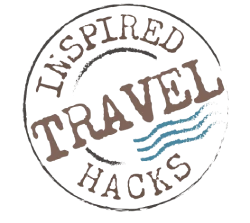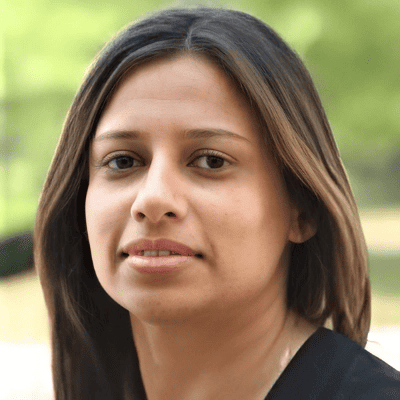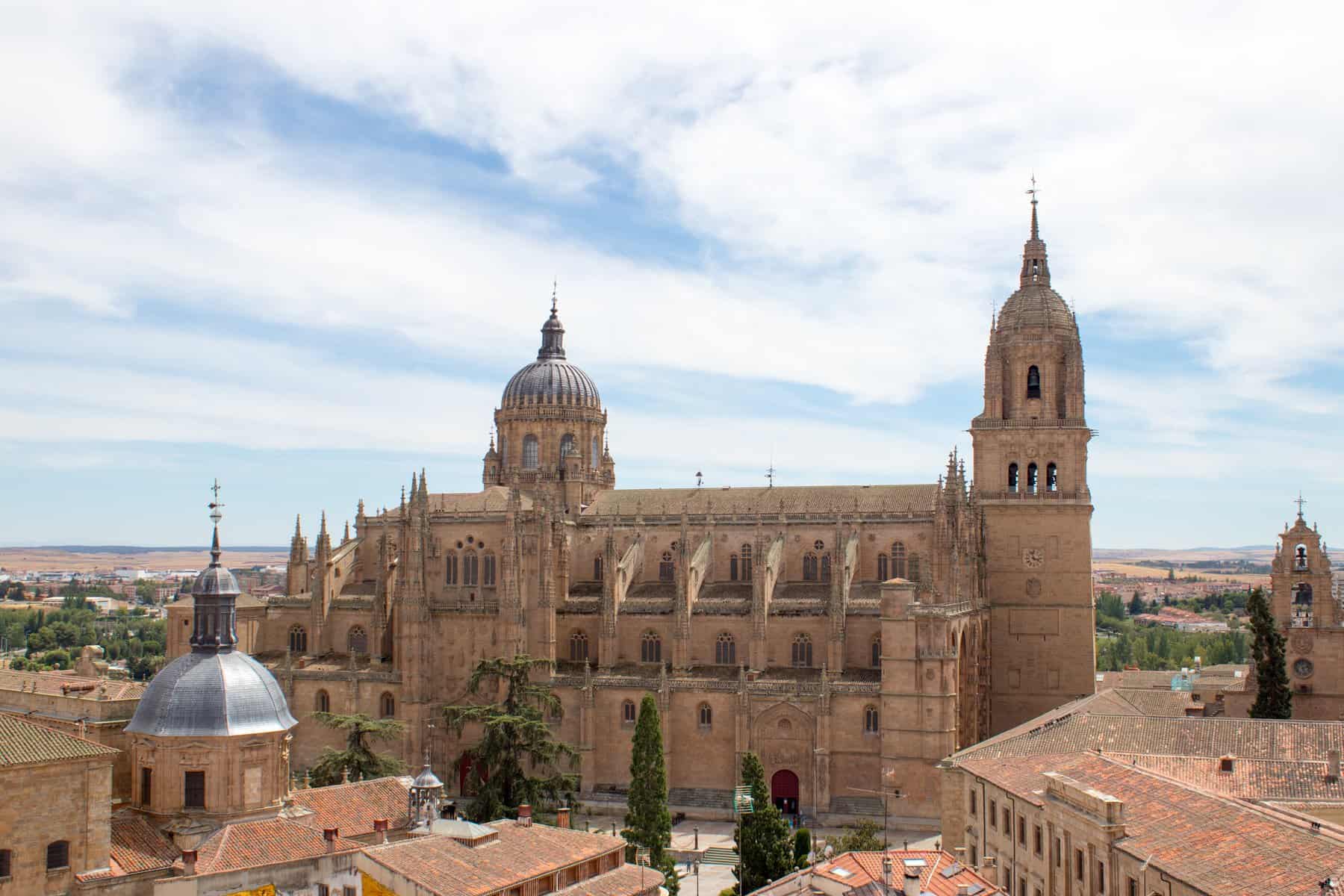
Best Things To Do In Salamanca – Spain’s University City
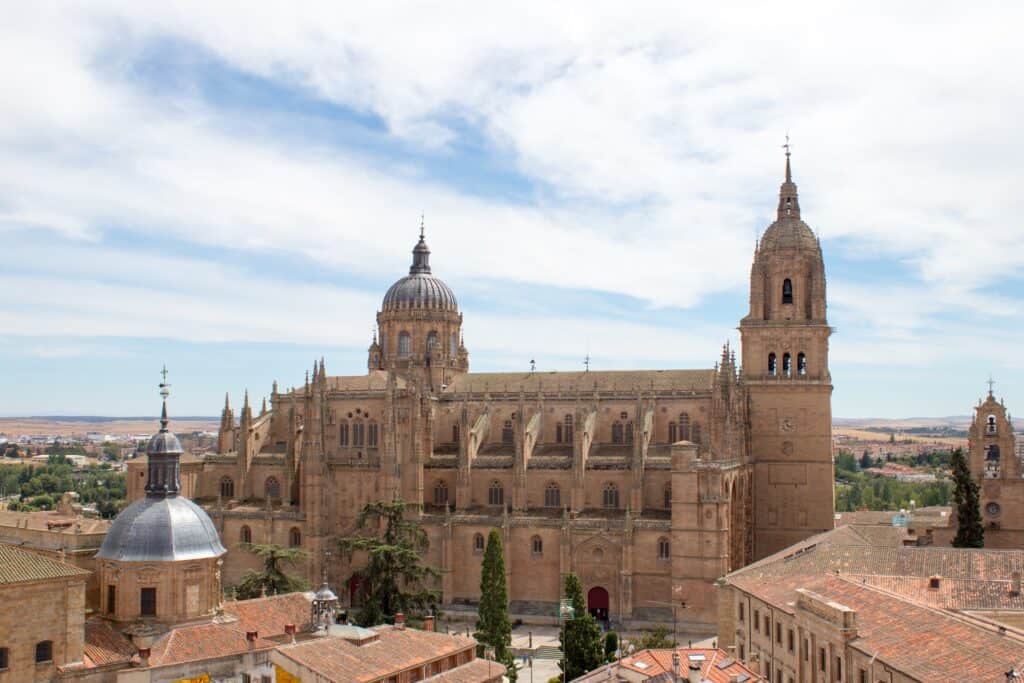
Salamanca is known as the university city of Spain as it has one of the oldest and most prestigious universities in the world, the University of Salamanca. Founded in 1134, this esteemed institution has been a beacon of knowledge and culture for centuries, attracting students from all corners of the globe.
On top of the city having a vibrant academic culture, the old city of Salamanca, a UNESCO World Heritage Site, showcases stunning architecture styles making the buildings a feast for the eyes. One such site is the Plaza Mayor, one of Spain’s most beautiful central squares, is a fine example of a baroque public space, and is simply breathtaking.
From its impressive history, architecture, and culture to its student atmosphere and laid-back charm, there are so many great reasons why you should visit this beautiful city. With just so much to explore, we have pulled together the best things to do when visiting this must-see Spanish university city.
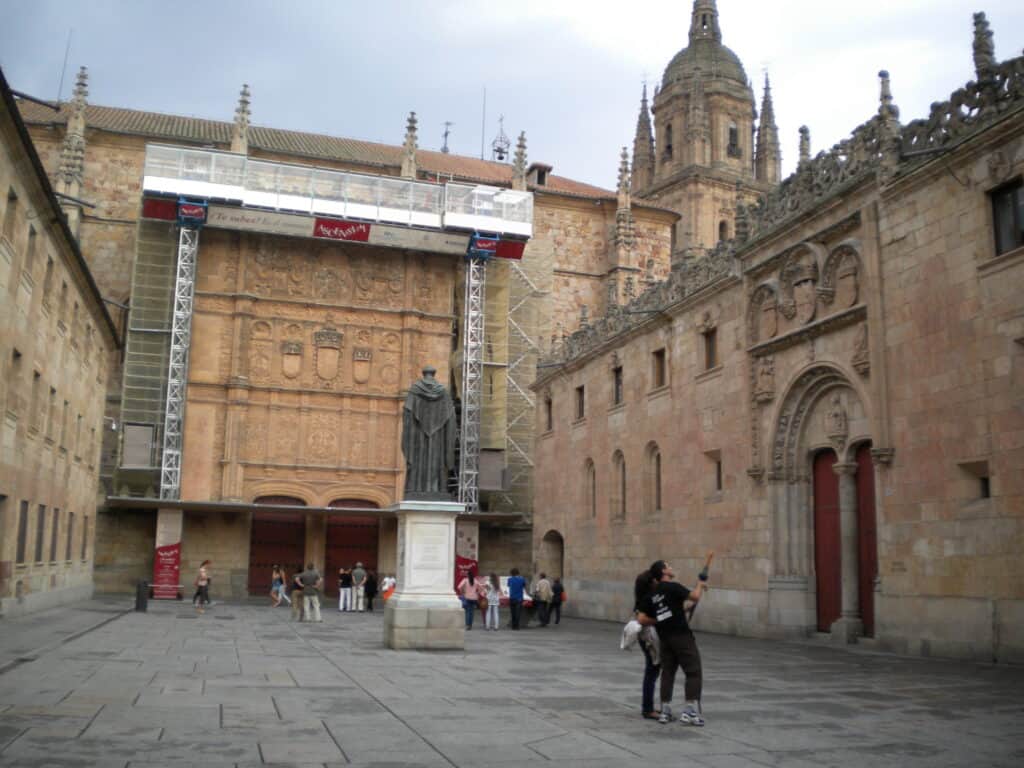
Visit The University of Salamanca
The University of Salamanca, one of the oldest universities in Europe was founded in 1218 by King Alfonso IX, and holds the distinction of being the first institution of higher learning in Spain. Over the centuries, this university continued to gain prestige and influence, shaping minds and nurturing intellects.
The university’s golden age was during the 15th and 16th centuries when it became a centre for teaching and culture. This period saw an influx of brilliant minds from across Europe, drawn to Salamanca’s intellectual vitality and the beauty of its architecture.
Many prominent figures have walked the corridors of the University of Salamanca and most famously, the revered Spanish writer Miguel de Cervantes, author of ‘Don Quixote,’ is said to have studied here.
Today, the University of Salamanca isn’t just a hub for academics; it’s also an architectural gem. The Plateresque style façade of the university is a masterpiece of Spanish Renaissance architecture. Don’t miss spending a few minutes to find the famous carved frog on the façade, as finding it is said to bring good luck, and you’ll find many students looking for the frog to bring them luck in their studies.
The University and other tour operators offer great guided tours that take you through the historic buildings, including the old library, classrooms, and courtyards.
If you don’t want to join a tour, a basic entrance ticket into the historic part of the university can also be purchased at the University’s ticket office.
The historic building is opening Monday-Fridays from 9:30-1:30pm and 4pm-7pm. Saturdays 9:30am-1:30pm and 4pm-6pm and Sundays from 10am-1pm.
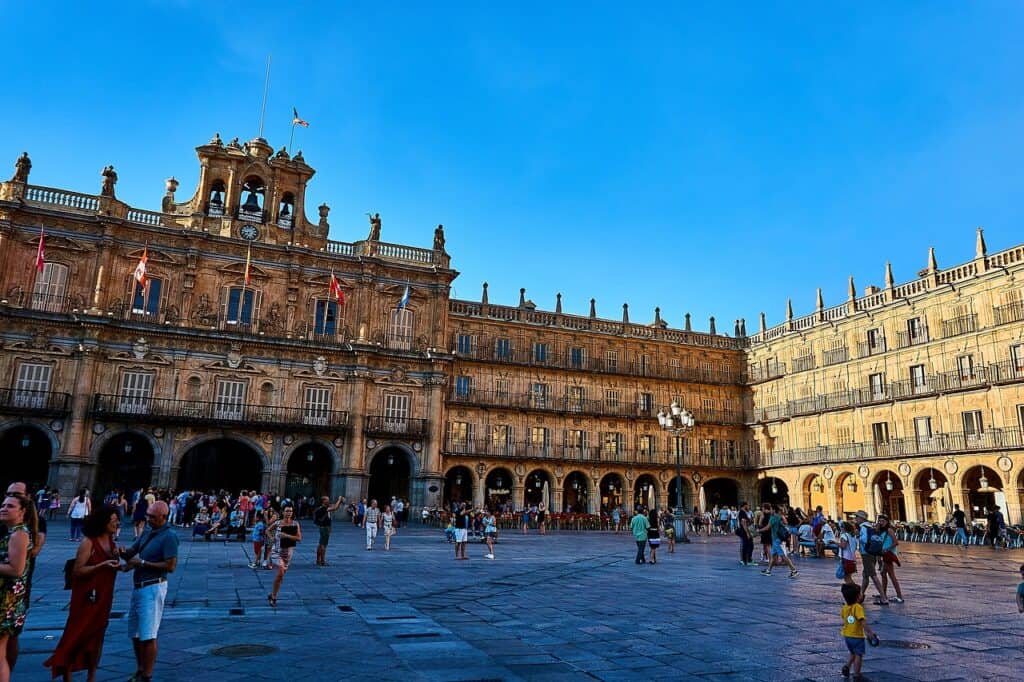
Relax In The Plaza Major
The Plaza Mayor is the jewel of the city and a stunning example of Baroque architecture and is widely considered to be one of the most beautiful squares in Spain. Built between 1729 and 1755, the square features an impressive façade with ornate carvings and wrought-iron balconies. The north side of the square houses the Town Hall, which is also a Baroque styled building with five impressive granite arches.
Today it continues to be a bustling central hub for the people of the city and a great place to meet, walk or eat and drink from the many restaurants and cafes that surround this beautiful square.
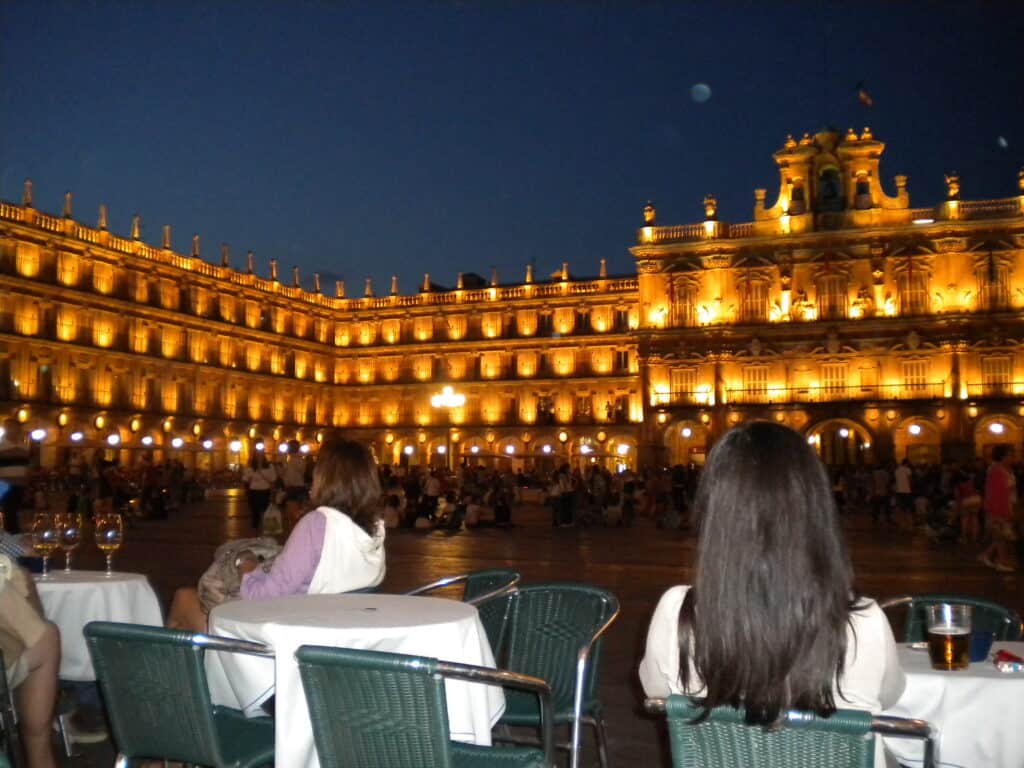
At night, the building’s grandeur is amplified as the space is beautifully lit, offering a breathtaking view that leaves visitors spellbound.
One of the best times to visit the Plaza Mayor is during one of the many festivals that take place throughout the year. During festivals such as the Feria de Salamanca or the Festival Internacional de las Artes, the plaza is filled with music, dance, and other cultural performances.

Visit The City’s Cathedrals
Salamanca has two magnificent cathedrals, The New Cathedral and the Old Cathedral.
The Old Cathedral (Catedral Vieja) was completed in the 14th century and showcases a blend of Romanesque and Gothic styles.
The New Cathedral (Catedral Nueva) is the seat of the Diocese of Salamanca. It continued the late Gothic style of its predecessor but also incorporated elements of Baroque and Renaissance in its design, Interestingly, when the New Cathedral was built, the Old Cathedral was left standing so that people could continue attending mass.
One peculiar story involves the astronaut figure carved into the façade of the New Cathedral. While some attribute it to ancient alien theorists, it’s actually a modern addition by restorer Miguel Romero, added during renovations in 1992.
Both cathedrals are open to the public and the entrance (for both) is through the door of the New Cathedral located on Plaza de Ayana.
The Cathedral offers different opening times depending on the season. From April to September (summer), you can visit from 10:00 am to 8:00 pm, while between October and March (winter), the cathedral is open from 10:00 am to 6:00 pm. Tickets can be purchased at the entrance or on the website.
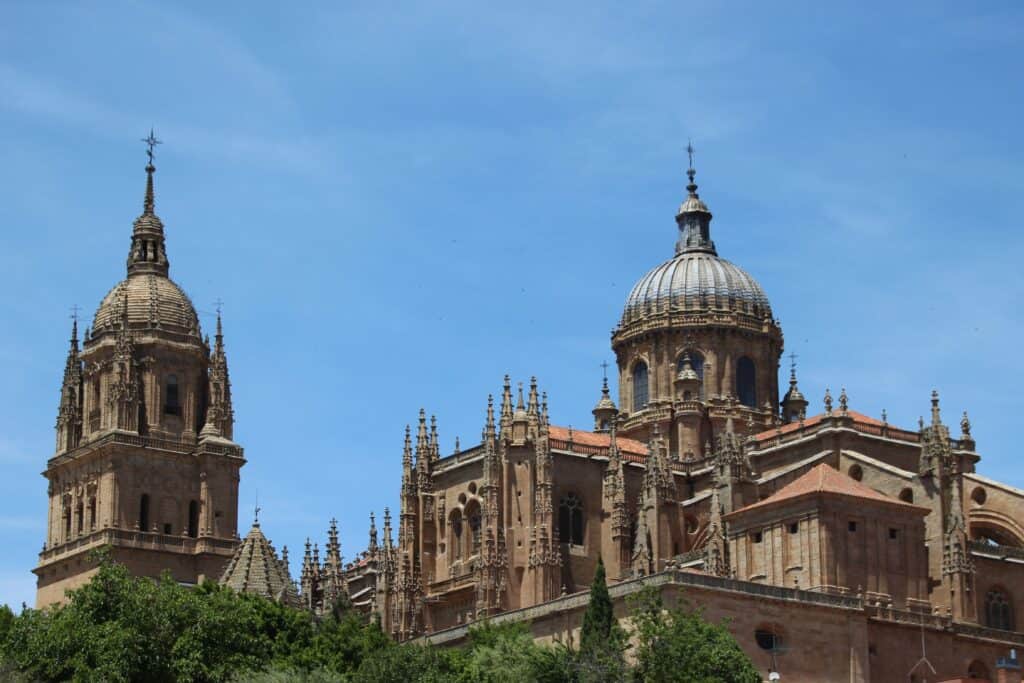
Climb The Cathedrals Towers
Ieronimus is the name given to the fascinating tour of the towers of Salamanca’s Cathedral. The tour operates daily, with special night tours also available. This tour offers access to the cathedral’s many wonders, including the terrace of Mocha Tower. Once you have reached the top, you are rewarded with stunning views of the surrounding area, making it one of the best things to do when visiting Salamanca.
For more information and purchasing tickets, visit the website.
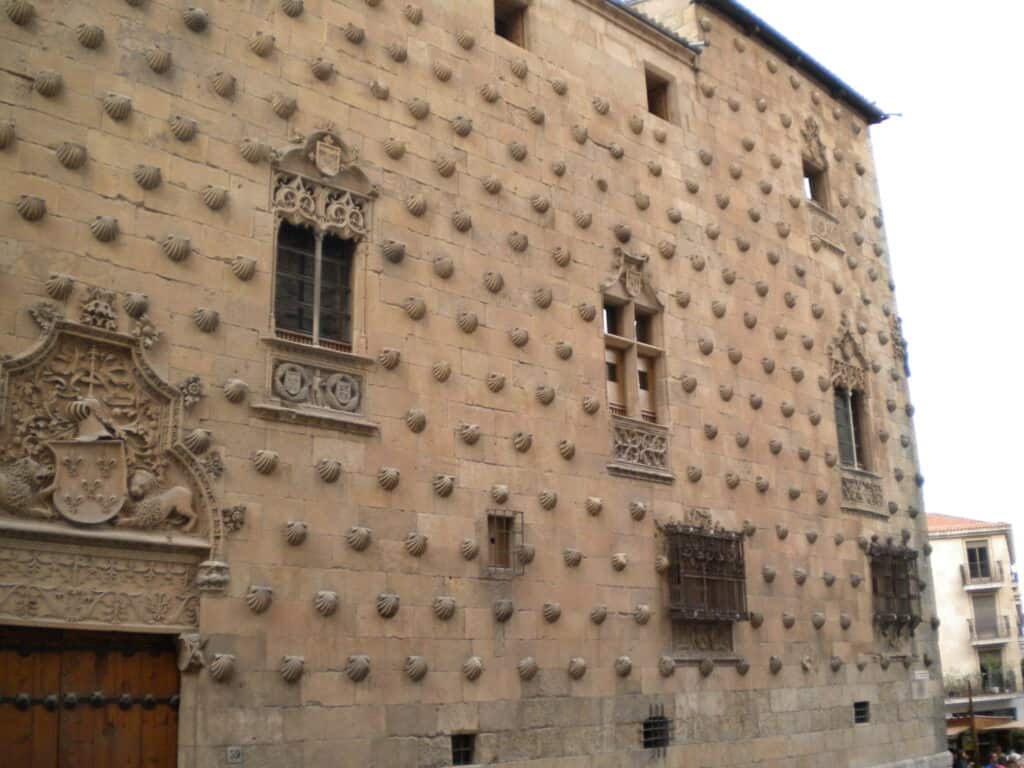
Visit The House Of Shells
In the heart of the historic city centre lies a peculiar gem – The Casa de las Conchas, or the House of Shells. As the name suggests, this Gothic-style house, built in the late 15th century, is adorned with over 300 scallop shells.
The house was was commissioned by Rodrigo Maldonado de Talavera, a knight of the Order of Santiago. His decision to embellish the façade with scallop shells was not merely aesthetic but had a deep symbolic meaning. The scallop shell was an emblem of the Order of Santiago, and it’s also a symbol for pilgrims on the Camino de Santiago. The house is a perfect blend of Gothic, Moorish, and Italian Renaissance styles, a testament to the changing architectural trends of the time. The façade, with its intricate latticework and scalloped shells, is a sight to behold. The inner courtyard, surrounded by a two-story arcade, offers a tranquil retreat from the bustling city outside. The ornate balcony railings and the stately staircase leading to the upper floors are examples of the exquisite craftsmanship of the era.
Today, Casa de las Conchas is a public library and also hosts temporary exhibitions. The building is open everyday and is free to enter.
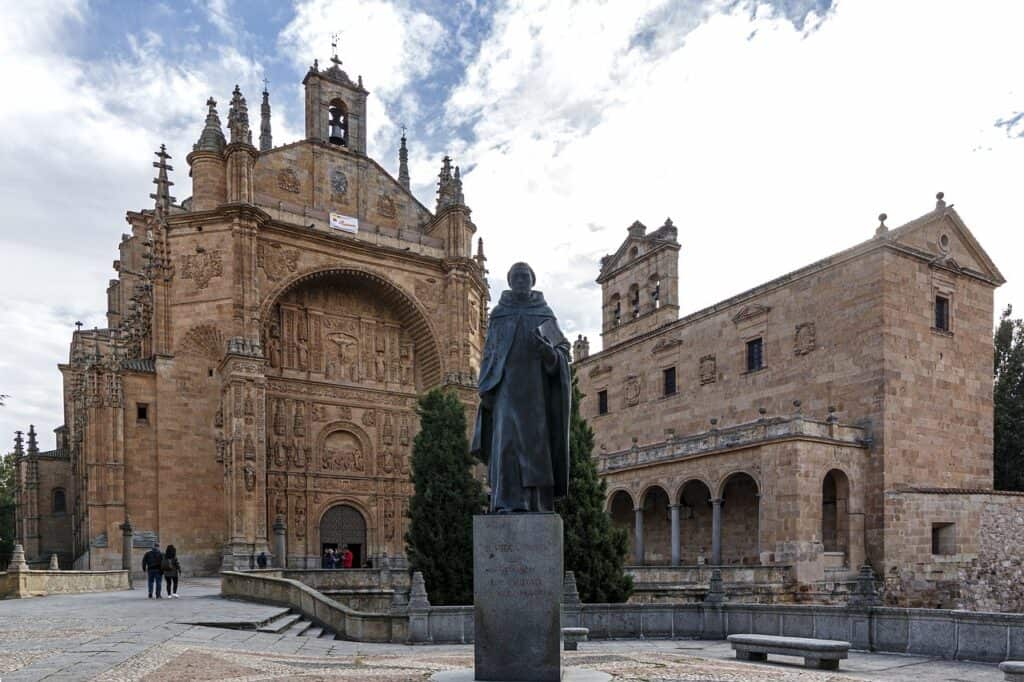
Visit The Convent of St. Stephen (Convento de San Esteban)
This magnificent Dominican convent, with its stunning architecture and profound history, is one of the best things to do when exploring this city.
The Convento de San Esteban was built between the 16th and 17th centuries, standing on the site of a previous convent that dated back to the 13th century. It played a significant role in the city’s religious and academic life, housing many notable theologians, missionaries, and scholars over the centuries.
As you approach the Convento de San Esteban, the first thing that strikes you is the majestic Plateresque façade. Intricately carved, it depicts the martyrdom of St. Stephen and is an excellent example of the Spanish Renaissance style.
Once you step inside, you are greeted by the ‘Soto Staircase,’ named after Brother Rodrigo Gil de Hontañón. This spiral staircase, with its floating appearance and lack of central support, is a marvel of engineering.
The convent is home to three cloisters, each with its unique charm. The most famous among them is the ‘Cloister of the Kings,’ adorned with the statues of Catholic Monarchs and scenes from the life of St. Dominic.
The church, with its massive altarpiece and beautiful choir stalls, is another highlight. The sacristy houses a small museum displaying religious artifacts and artwork, which gives one a glimpse into the rich history of the Convento de San Esteban.
Visiting the Convento de San Esteban offers a fascinating insight into Salamanca’s past and the Dominican Order’s influence on the city. So make sure to set aside a few hours to explore this historical treasure.
The convent is open to the public everyday from 10am-2pm and the 4pm-8pm and tickets can be purchased at the ticket office.
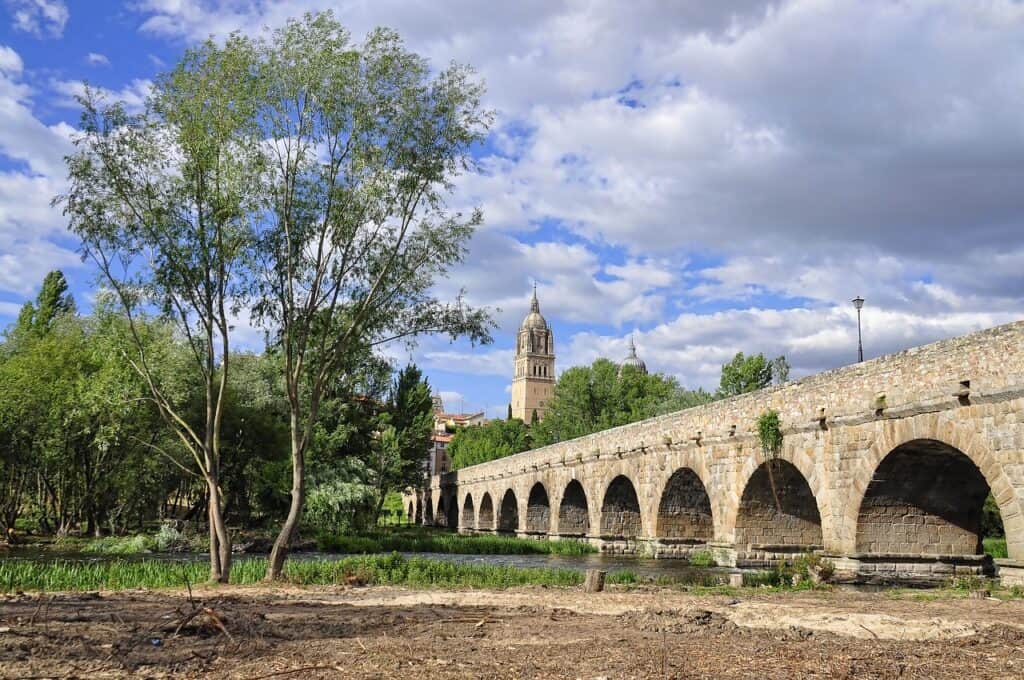
Cross The Roman Bridge
The Roman Bridge, also known as the Puente Mayor del Tormes is not just a bridge that crosses the Tormes River it is also a testament to Roman engineering and adds to the rich history of the city.
Though its exact construction date remains unknown, the Roman Bridge is believed to have been built during the first century AD and forms part of a historical trade route. The bridge spans one of the widest stretches of the Tormes River, resting on a rocky subsoil. With its round arches and robust pillars, it stands as a formidable structure, stretching 176 meters in length and 3.7 meters in width.
Over the centuries, the bridge has undergone modifications and expansions, further contributing to its longevity. Today, it serves as a pedestrian bridge, offering stunning views of Salamanca’s old city and its surrounding landscapes.
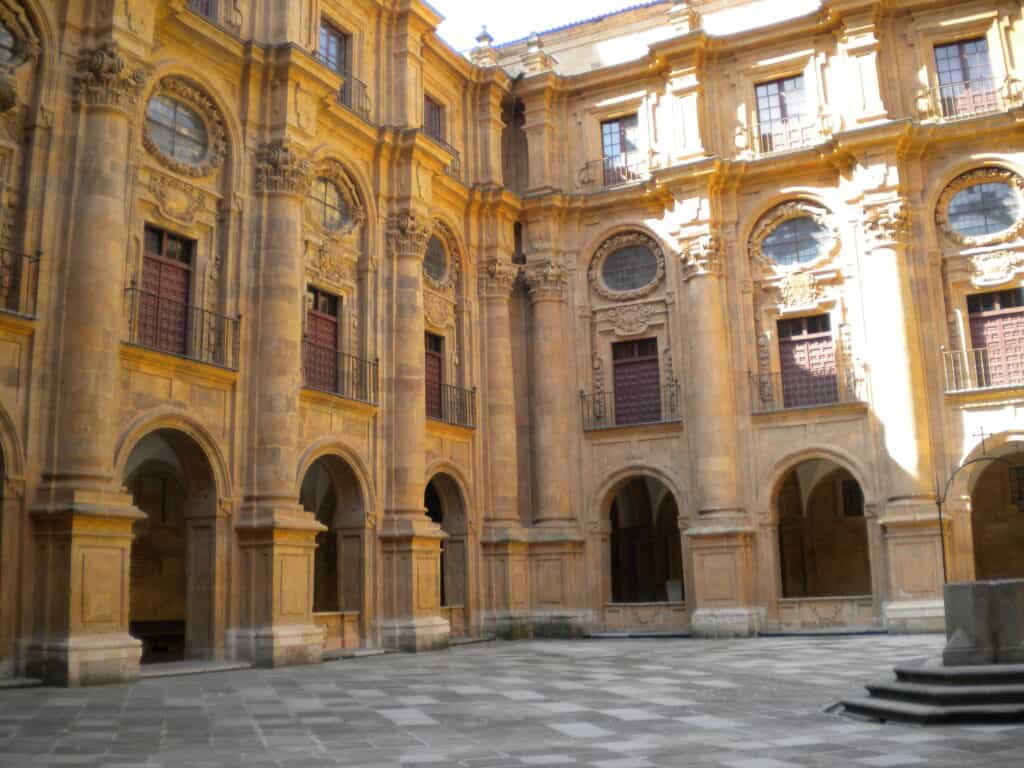
Visit The Majestic Clerecía Church
Visiting the majestic Clerecía Church is a one of the best things to do when visiting Salamanca.
The Clerecía Church, officially known as the Royal College of the Company of Jesus, is a breathtaking baroque-style building that stands proudly in the heart of the city. Constructed in the 17th century by the Jesuits, it served as a university and a church.
Its name ‘Clerecía’ refers to the clergy, as the church was transferred to the Real Clerecía de San Marcos after the Jesuits were expelled from Spain. Today, it stands not only as a place of worship but also as an embodiment of Salamanca’s rich history.
The church boasts a stunningly ornate interior with intricate detailing, grand arches, and impressive frescoes. The main altar, adorned with beautiful sculptures, is a sight to behold.
One of the highlights of the Clerecía Church is its naves. The central nave is dedicated to St. Ignatius of Loyola, founder of the Jesuits, while the side naves are dedicated to St. Francis Borgia and St. Stanislaus Kostka. Each nave tells a unique story through its art and architecture.
A great thing to do is to also climb up the Scala Coeli towers. These towers, part of the Clerecía Church complex, offer panoramic views of Salamanca and the city’s honey-coloured buildings, the Old and New Cathedrals, and the University of Salamanca.
It is important to know that the only way to explore this church is through a guided tour. This colossal baroque church and the Catholic university offer tours every 45 minutes. The tours are mostly conducted in Spanish, however information leaflets in English are provided. Even if you don’t speak or understand Spanish, a visit to Clerecía Church and towers is one of the best things to do in Salamanca.
To plan your visit check the opening times locally, as the Church has limited and irregular opening hours.
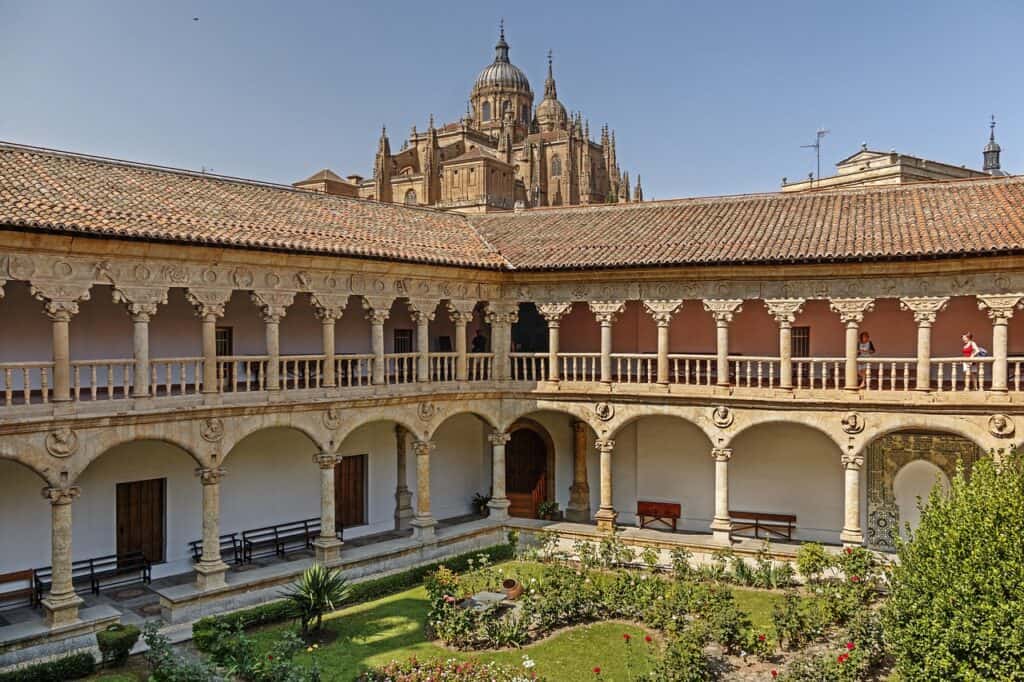
Visit The Serene Las Dueñas Convent
Among the city’s many treasures is the Las Dueñas Convent, a tranquil sanctuary that offers a unique blend of history, art, and spirituality.
The Las Dueñas Convent was founded in 1419 by Juana Rodriguez Maldonado, who established it in her own palace. This Dominican convent was initially built in a Moorish style, featuring a front with a pointed arch and magnificent tiling. However, the church and cloister were added over the 15th and 16th centuries and reflect the evolving architectural trends of the time.
Perhaps one of the most intriguing aspects of the Las Dueñas Convent is the ghoulish carvings found on the cloister’s capitals. These unique carvings add a touch of mystery to the convent, making it a must-visit for those interested in the unusual and macabre.
When visiting, remember to respect the sanctity of the place as it is not just a historical monument but also a functioning religious institution. Opening hours are generally from 10:30am-12:45pm and 16:30pm-17:30pm. The convent is closed on Sundays and holidays. Tickets can be purchased at the entrance.
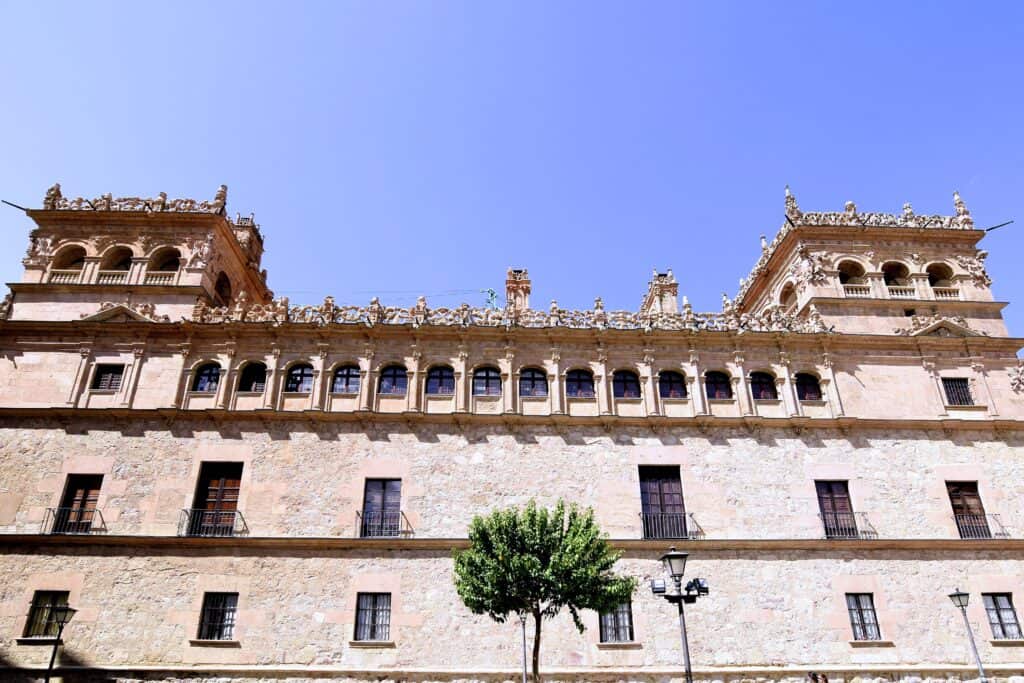
Visit The Palace of Monterrey
Built in the 16th century by the Third Count of Monterrey, the palace is currently owned by the Duke of Alba.
The Palace is a square building extended on its back by two parallel wings. It comprises three floors and four towers. The exterior detail of the corner tower is a marvel of intricate design, showcasing the craftsmanship of the period.
A visit to the Palace of Monterrey allows you to experience the lifestyle of Spanish nobility during the Renaissance era. Walking through the historic rooms and gardens, you can imagine what grand events and intrigues took place within these walls centuries ago. It provides a glimpse into Salamanca’s past as a wealthy and influential city.
The palace offers guided and audio-guided tours that takes you through the twelve main rooms of the palace and the fortified towers. The palace is open Tuesday to Sunday and closed on Mondays.
It is also worth noting that the palace is free to visit for a short time on Tuesdays. However, reservation bookings need to be made online at least one week before the visit and is subject to availability.
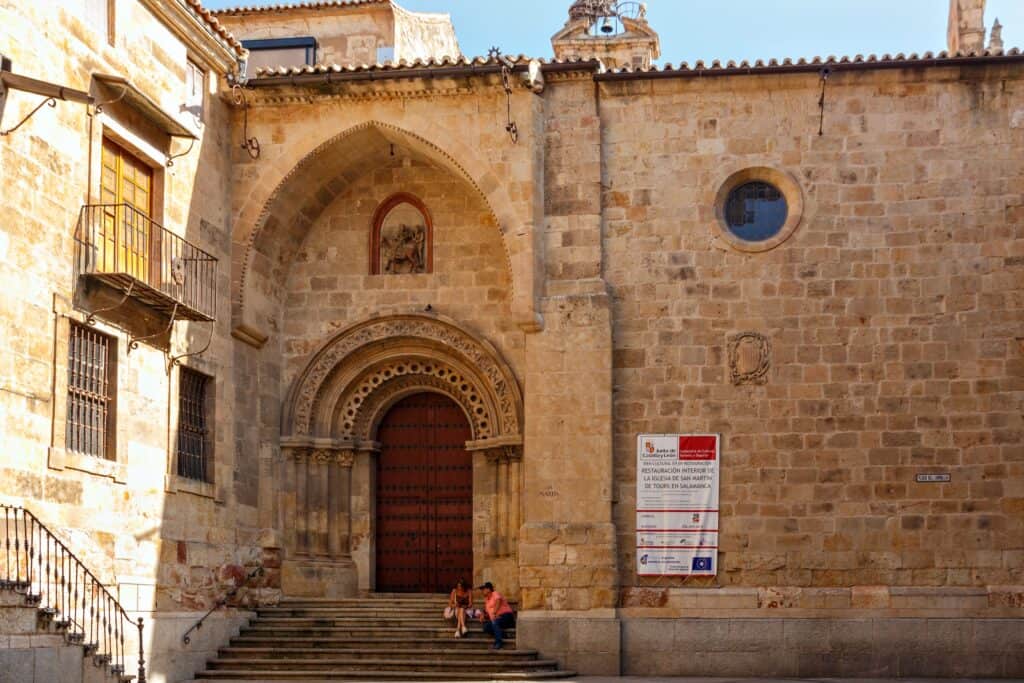
Visit The Church Of San Martin
Nestled in the heart of Salamanca stands the Church of San Martín. Constructed in the 12th century on the initiative of Count Martín Fernández, the Church of St. Martin was built on the site of a chapel dedicated to Saint Peter.
Today the Church of San Martín is a stunning example of Romanesque architecture, which is characterized by its semicircular arches and sturdy pillar.
The interior of the Church of San Martín is as impressive as its exterior. Beautiful frescoes adorn the walls and ceilings, and the grand altar offers an enchanting sight. This church was declared a National Historic Monument, further cementing its importance in Spain’s cultural and religious heritage.
The church is open daily 11am-2pm and 4-5pm, and free to enter.
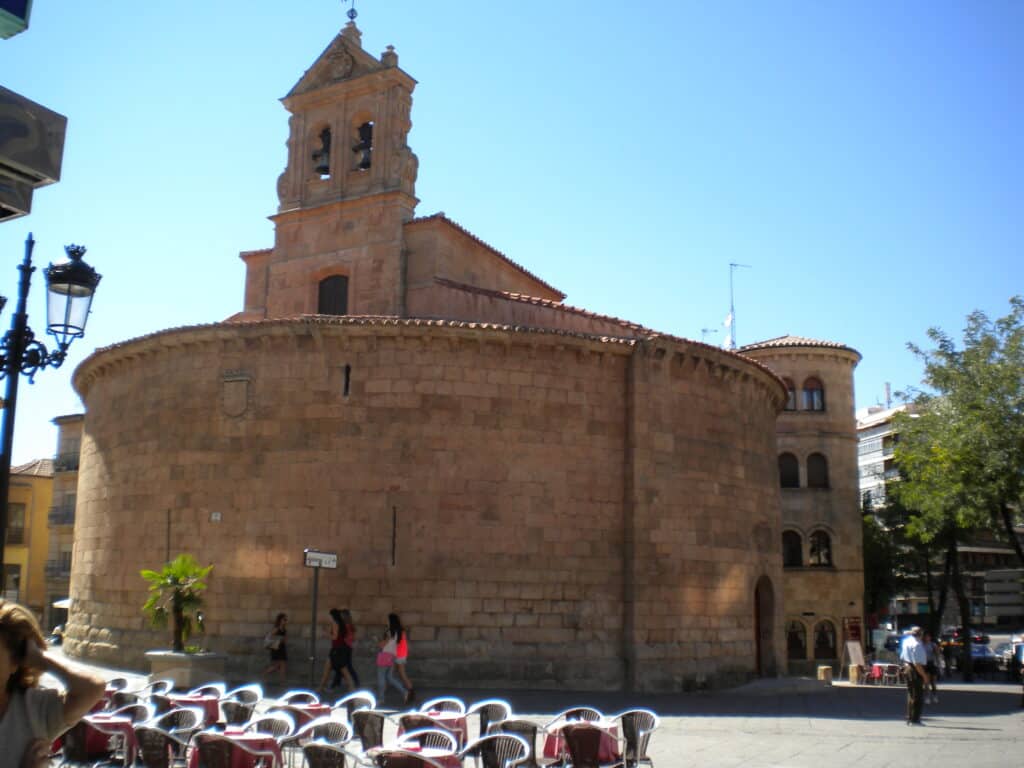
Visit The Church of San Marcos
The Church of San Marcos is a remarkable piece of architectural history, dating back to the 12th century. This Romanesque-style church, with its circular floor plan and Baroque belfry, is situated near the Puerta de Zamora, in the heart of the city. Despite its size, the church is a must-visit for its unique round structure and the tranquil ambiance it offers.
This church is free to enter and opening times are Mon-Fri 7:30am-2:30pm and then 5:30-8:30pm. Weekends (and public holidays) the church is open 9am-1pm and then 6-8:30pm.
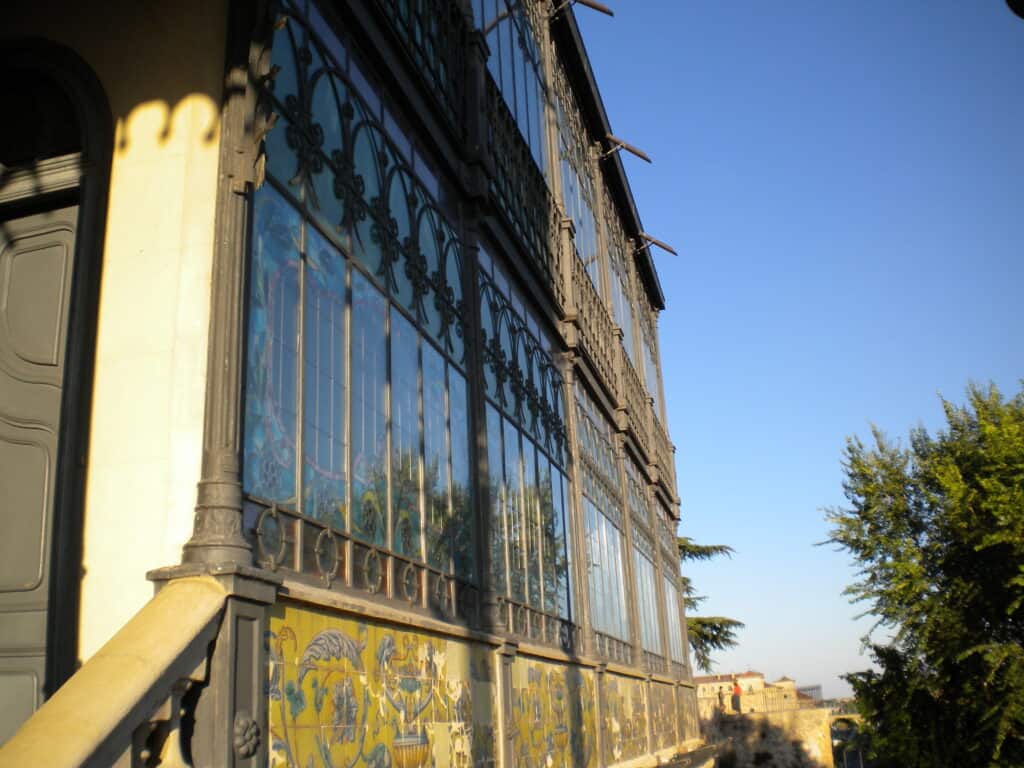
Visit Casa Lis – Museum Of Art Nouveau & Art Deco
From the outside, Casa Lis presents itself as an urban mansion with a modernist stained-glass façade that instantly catches your eye.
Inside, Casa List museum showcases a diverse range of artefacts from Art Nouveau and Art Deco periods, including lamps, dolls, glassware, and other everyday objects transformed into works of art.
But the charm of Casa Lis doesn’t end with its collections. The museum also offers a spectacular view from its café patio, where you can a break to soak in the lovely views.
The museum is located across from the Roman Bridge and is open everyday from 11am-7pm. There is an entrance fee and tickets can purchased either online or at the museum’s ticket office.
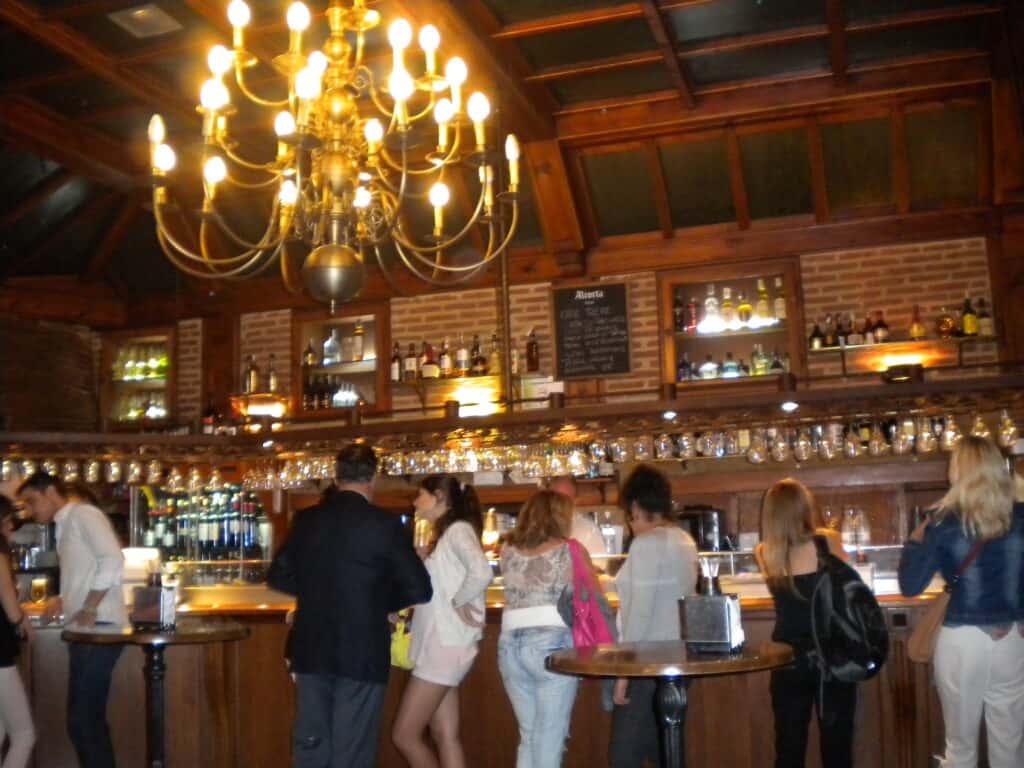
Enjoy Food & The Night Life
Salamanca offers a great culinary experience and vibrant nightlife. From traditional tapas bars to innovative contemporary cuisine, here are some of the best dining spots Salamanca has to offer.
Tapas 3.0: As the name suggests, Tapas 3.0 takes the traditional tapas experience to a new level. With a focus on innovative flavours and presentation, this is a great spot for adventurous foodies.
El Mesón de Gonzalo: If you’re looking to try traditional Spanish cuisine, El Mesón de Gonzalo is a must-visit. Housed in a charming building, this restaurant serves classic dishes like paella and gazpacho, prepared with a modern twist.
Vinodiario: This Mediterranean restaurant is a favourite among locals and tourists. The menu at Vinodiario is diverse, offering a range of dishes from fresh seafood platters to hearty meat dishes. Pair your meal with a glass of fine Spanish wine from their extensive selection.
Casa de Comidas Montero: Often hailed as the highlight of a culinary experience in Salamanca, Casa de Comidas Montero is not to be missed. This tapas bar offers a variety of delicious small plates, perfect for sharing with friends or family.
Cepas Viejas: Another top-rated spot, Cepas Viejas, is known for its traditional cuisine and warm, welcoming atmosphere. The menu changes with the seasons, ensuring fresh, locally-sourced ingredients in every dish.
La Bellota Charra: For meat lovers, a visit to La Bellota Charra is a must. Known for their quality cuts and expert preparation, this restaurant offers a true taste of Spanish meat dishes.
PizzaPizza Villares de la Reina: Ranked as one of the top restaurants in Salamanca. PizzaPizza Villares de la Reina is more than just a pizzeria, it offers a fusion of Italian cuisine with local Spanish flavours, creating a unique dining experience.
Nightlife
As dusk falls, Salamanca’s nightlife springs to life. The city is dotted with numerous pubs, clubs, and bars that cater to all tastes. Whether you prefer a relaxed evening at a bar or on the square or a night of dancing at a club, Salamanca has it all.
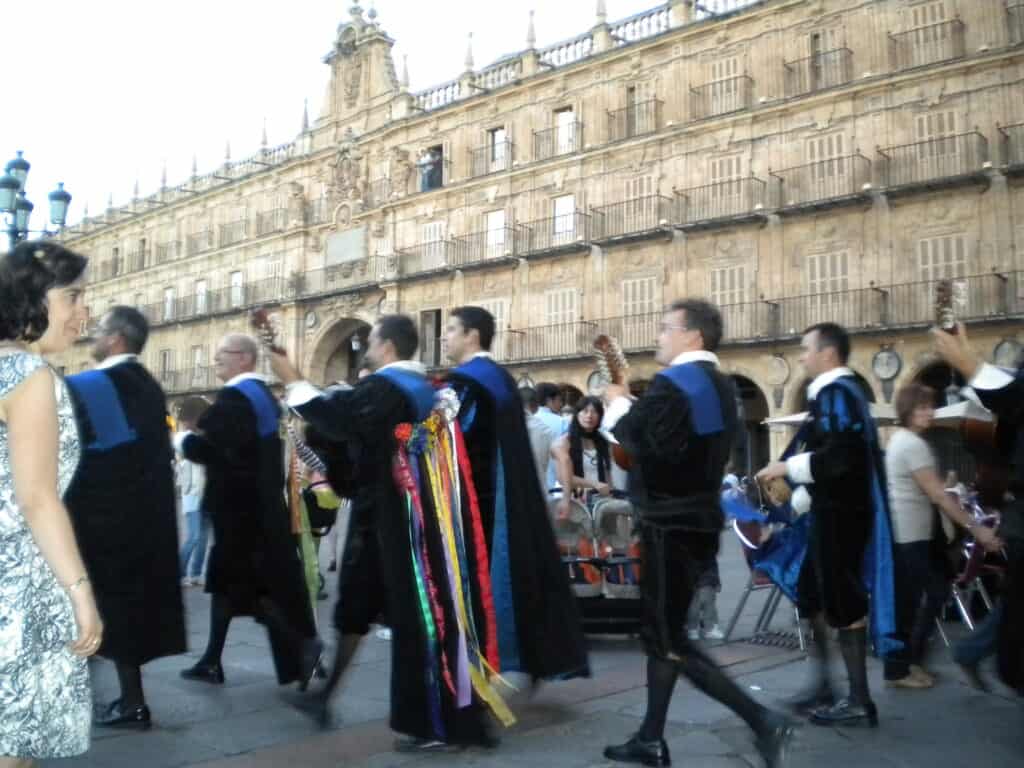
One of the unique aspects of Salamanca’s nightlife is the tradition of the “Tuna”. This centuries-old tradition sees groups of university students, dressed in traditional Spanish attire, serenading the streets with their guitars, lutes, and tambourines. The melodic tunes create a festive atmosphere that is uniquely Salamancan.
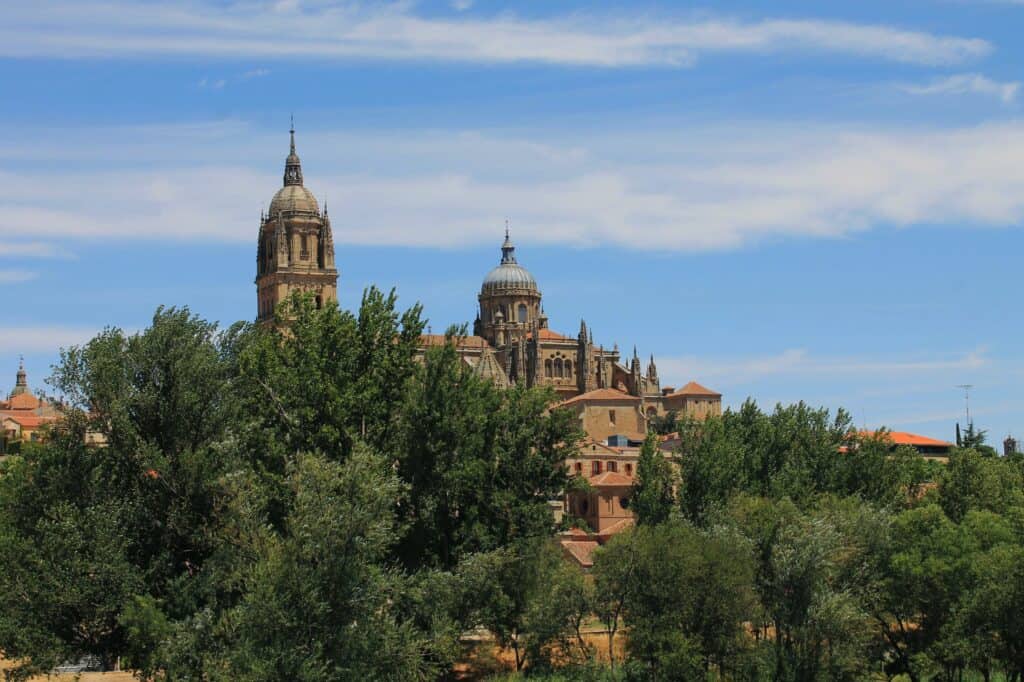
To Wrap On The Best Things To Do In Salamanca
Salamanca offers up countless possibilities for adventure and exploration. With its cobbled narrow streets, ancient monuments, glorious architecture, delicious food and fun nightlife, the city provides experiences that enrich mind and spirit. So if you’re looking for an immersive experience, look no further!
Read my blog post for the Two Of The Best Guided Walking Tours In Spain’s Salamanca.
Further FAQs:
How To Get To Salamanca
Reaching Salamanca is fairly straightforward, with several options available. If you’re traveling internationally, the most convenient method would be to fly into Madrid Barajas International Airport (MAD), which is the closest major international airport to Salamanca. From there, you can take a bus or train to Salamanca; the journey typically takes about 2-3 hours.
The high-speed train service, AVE, operated by Renfe, connects Madrid to Salamanca in just over an hour and a half.
If you’re already in Spain or prefer road travel, Salamanca is well-connected by highways with Madrid along with other major cities. You can rent a car or take a long-distance bus.
When To Go To Salamanca
Salamanca is a year-round destination. So, if you’re trying to figure out the best time to go, you’ll want to consider not only the weather but also the vibrant festivals that punctuate the city’s calendar. Here’s a guide to help you plan your visit.
Spring (March to May): Spring in Salamanca is a delightful season, characterized by mild temperatures and blossoming trees. The average highs range from 15°C in March to 27°C in June, making it an excellent time to explore the city’s architectural gems. without the summer crowds.
In May, Salamanca hosts the Feria de Mayo, a traditional fair with bullfighting events, music, and dancing.
Summer (June to August): Summers in Salamanca are warm and dry, with average highs ranging from 30-35°C. While some may find the heat intense, the advantage is that the city is less crowded as many locals leave for their summer vacations.
The highlight of summer in Salamanca is the Fiesta de Santa Ana at the end of July. This week-long celebration includes concerts, food festivals, and a grand fireworks display.
Autumn (September to November): Autumn is another fantastic time to visit Salamanca. The weather is comfortable, with average highs ranging from 29°C in September to 14°C in November. The city’s parks and gardens are awash with autumnal colors, creating a picturesque backdrop for sightseeing.
The Festival Internacional de las Artes de Castilla y León (FÀCYL) takes place in the second half of September. This multi-disciplinary arts festival features music, theatre, dance, and visual arts from international artists.
Winter (December to February): Winter in Salamanca is relatively mild compared to many European cities, with average highs hovering around 9-11°C. While it can get chilly, it’s a great time to enjoy the city’s Christmas festivities and the traditional New Year’s Eve celebration in Plaza Mayor.
The Nochevieja Universitaria, or “University New Year”, is a unique event held in mid-December. It draws thousands of students who gather in Plaza Mayor to eat twelve grapes at the stroke of midnight, a week before the actual New Year; a tradition for students before they go back home for the holidays.
How Much Time To Spend In Salamanca
Depending on the pace of travel you prefer, at least 3 days is recommended to be able to explore and visit all the best things to do in the city.
Where To Stay In Salamanca
Salamanca has many hotel options. Here are some highly recommended hotel options.
Disclosure: Please note that some of the hotel links below are affiliate links. At no extra cost to you, we earn a small commission from each booking that allows us to help maintain this website.
Luxury Hotels
Grand Hotel Don Gregorio: This hotel, housed in a 15th-century palace, is one of Salamanca’s finest luxury accommodations. The rooms and suites seamlessly blend historical charm with modern conveniences, it promises an unforgettable stay.
Hotel Rua Salamanca: Located near the Old Cathedral, this popular hotel offers comfortable rooms and excellent service. Its central location makes it ideal for those who wish to explore the city on foot.
Hospes Palacio de San Esteban: The Hospes Palacio de San Esteban is housed in a 16th-century convent. The hotel perfectly combines tradition and modernity. Its central location places you right in the heart of the city and within walking distance of the city’s main attractions.
Boutique Style & Budget Friendly Hotels
Hotel Monterrey: Situated in the heart of Salamanca, Hotel Monterrey offers a blend of comfort and convenience. With its stylish rooms and friendly staff, it’s a great base for your Salamanca adventure.
Emperatriz I Hotel: Near the Old Cathedral, this hotel offers budget-friendly accommodations without compromising on comfort.
Hotel Reyes Catolicos: This hotel offers affordable rooms and a convenient location, making it a great choice for budget travelers.
